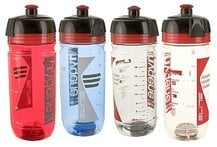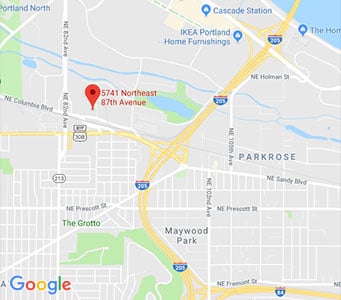Hydration and Nutrition
 Plenty of attention is paid to the bikes we ride, parts and accessories. Providing proper fuel to the engines of our bikes—our bodies—is often an afterthought. No amount of component upgrades, weight savings and aerodynamic tricks will produce any benefit if the engine can't back them up.
Plenty of attention is paid to the bikes we ride, parts and accessories. Providing proper fuel to the engines of our bikes—our bodies—is often an afterthought. No amount of component upgrades, weight savings and aerodynamic tricks will produce any benefit if the engine can't back them up.
Due to the low impact nature of cycling, it is deceptive how many calories are burned on the bike, especially on long rides. Calorie and nutrient replacement is a crucial part of maintaining on-the-bike energy levels. While a comprehensive nutrition plan for athletes is best determined by a dietitian or nutritionist, fueling up for a long ride is relatively simple. It just takes some planning.
The primary source of energy our body relies on are called glycogen stores. Glycogen is what carbohydrates are converted to after digestion. Glycogen stores reside in the muscles and liver and are quickly converted into energy. Unfortunately, the human body can only store 2,000 calories worth of glycogen (We're talking food calories here, which are actually kilocalories, but we'll just say calorie for the sake of clarity.). A reasonably fit cyclist riding in a race can easily burn 1,000 calories an hour. When glycogen stores are depleted, our bodies rely on processing fat and muscle for energy. Converting tissue into energy is far less efficient than glycogen stores and creates the "bonk" feeling that many cyclists are familiar with. Long story short, glycogen stores must be constantly replenished during prolonged exercise.

When discussing nutrition, proper hydration cannot go unmentioned. If you think of your body as a car engine, calories are the fuel, and water and electrolytes are the oil. The fuel won't be burned if the engine can't run smoothly. Unfortunately, our bodies have a huge oil leak that happens to cool us down, and the oil needs to constantly be refilled. So, just like Mom said, drink plenty of water.
1-2 Hour Rides
Proper hydration is the foundation of on-bike nutrition. The basis of hydration is drinking plenty of water, before, during and after every ride. Another important aspect of hydration is maintaining electrolyte balance. Electrolytes refer to the sugars, salts and amino acids lost during physical exertion.
Short to moderate length rides lower electrolyte levels which can be replaced quickly with a typical sports drink. A sports drink will also contain enough calories to keep energy levels from dropping. Hammer Heed, Cytosport and Nuun all contain calories to keep energy levels high and prevent depletion of glycogen stores, as well as electrolytes and amino acids to help prevent cramping.
For especially intense 1-2 hour rides such as time trial or criterium racing, many riders supplement a sports drink with gel to maintain high energy levels. It is important to note that a one hour crit is usually preceded by a one hour warmup and followed by a 20-30 min cool down. Take that into account when packing food for race day.
3-5 Hour Rides
Rides lasting longer than 3 hours will create a new set of nutritional demands. Glycogen stores will deplete, to maintain this important source of energy will require calories. Energy gel is the most efficient way to maintain energy levels. For any competitive or avid touring riders, energy gel is no stranger to the regular diet. Gels are fairly similar across brands. Flavors may differ, and some may contain a bit of caffeine, but for the most part they provide maltodextrin (a slow burning "long chain" carbohydrate), electrolytes and amino acids (to prevent cramping), and a bit of simple sugar for a quick energy bump and flavor. If you can't stomach the frosting-like texture of gels, there are alternatives coming onto the market all the time. Check out Shot Bloks, Chomps, Energy Drops, or Sport Beans.
Longer rides will also cause muscles to begin to break down as protein is burned when glycogen stores have been depleted. Remember the time you were coming home from a hot, long ride and just, all of the sudden, couldn't push the pedals anymore? That's the feeling. The best source for on the bike protein is either a fortified drink or solid food. Endurance drinks like Hammer Perpetuem contain more calories than a typical electrolyte drink, as well as enough protein to stave off muscular depletion.
Relying solely on liquids for the duration of a long ride can leave a rider feeling queasy. Solid foods are also more concentrated sources of calories and nutrients. You might consider Clif Bars or another energy bar, or you can experiment with what works for you. Some riders carry peanut butter sandwiches or other snacks.
Some riders push endurance to new levels by participating in ultra-endurance and "epic" races as well as multi-day stage racing. In these events, proper nutrition is even more crucial, as the body is taxed in every way. The body will struggle to recover from the previous effort while the rider is planning for the next. Multi-day events require a rider to consume several thousands of calories a day while on the bike. For these events, it's important to have multiple sources of calories at the ready, so that you can adapt to what your body needs as you go. Make sure you've tested all of your options during training, so you'll know what works for you!
Electrolytes
The body loses electrolytes along with water in sweat. On especially long and hot rides, electrolyte loss can lead to cramping. Hammer Endurolytes and SportLegs are specially formulated electrolyte replacement pills. And yes, they work. Nuun is another good source of electrolytes.
Recovery
Every racer has heard it, but few heed the call: RECOVERY IS JUST AS IMPORTANT AS TRAINING! Yes, it's counter-intuitive: doing nothing actually does something. Not only are pro riders really good at riding their bikes, they are really good at relaxing and getting optimum rest off their bikes. Unfortunately, us recreational riders don't have assistants running around accommodating our nutritional needs and food preferences. A recovery drink is the perfect way to cover your basic nutritional needs when recovering from long rides.
After a hard ride, your body starts what physiologists call a "glycogen window". This is a 45-60 minute period immediately after exercise when the body is most receptive to nutrients and most effectively processes them. Hammer Recoverite and Osmo Acute Recovery are specially formulated to provide the nutrients the body is most responsive to during the "glycogen window". These mixes are especially convenient because they contain the nutrients your body needs most and you can have them waiting in the car at the finish. By the time you change clothes and drive back to town, the window has closed and your body will not be as receptive to these essential nutrients.
Protein Drink Warning! - Drinks that contain protein usually rely on either soy or whey based protein. These forms of protein have been known to cause upset stomach in some users. When trying a new nutrition product, be sure to test them out on a training ride beforehand. Race day is not the time to find out that your new drink mix and your stomach disagree.
For any questions regarding hydration and nutrition products, feel free to contact us at [email protected] or 1-800-651-4050. We've got a staff of experienced cyclists ready to help you find: 1. what works and 2: what tastes good. Sometimes they're even one and the same.





